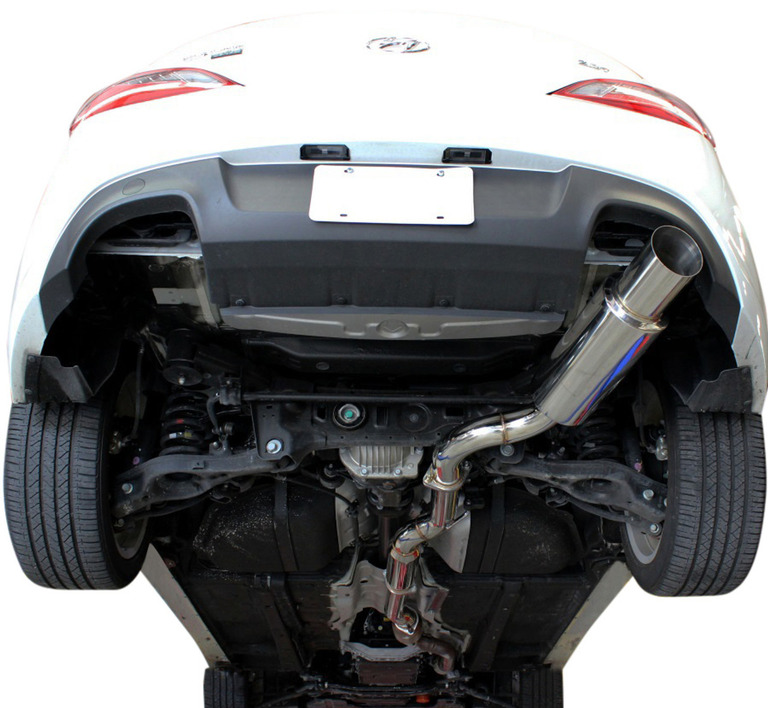
The Hyundai Genesis Coupe, launched in 2008, quickly carved a niche in the affordable sports car segment with its rear-wheel-drive layout, potent V6 engine, and tuner-friendly design. Discontinued in 2016, it remains a darling of the racing and modification community, thanks to its balance of performance and accessibility. Whether you’re hitting autocross events, drifting sessions, or full-on track days, upgrading with racing parts can transform the Hyundai Genesis into a corner-carving beast. In this article, we’ll explore key racing components that enhance power, handling, and durability, helping enthusiasts extract every ounce of potential from this underrated icon.
Genesis Coupe Racing Parts: Machine
Starting with the heart of the machine, engine upgrades are paramount for Hyundai Genesis Coupe racers. The stock 3.8L V6 produces around 306 horsepower, but aftermarket turbo kits from brands like Garrett or Precision can push outputs beyond 400 hp, ideal for drag racing or time attack. Cold air intakes from K&N or AEM improve airflow, reducing intake temperatures and adding 10-20 hp with minimal effort. For those seeking reliability on the track, forged internals like pistons and rods from Brian Crower prevent catastrophic failures under boost. ECU tuning via Cobb Accessport or custom maps optimizes fuel and ignition timing, ensuring seamless power delivery. Don’t forget a high-flow fuel pump—stock units choke under high demand, leading to lean conditions.
Genesis Coupe Racing Parts: Handling
Handling is where the Genesis truly shines with racing suspension upgrades. Coilover kits from Tein or BC Racing offer adjustable damping and ride height, allowing precise setup for bumpy circuits or smooth drift courses. Sway bars from Hotchkis reduce body roll, sharpening turn-in response, while polyurethane bushings replace the factory rubber for crisper steering feel. For ultimate control, a limited-slip differential (LSD) from Quaife or OS Giken distributes power evenly to both rear wheels, minimizing wheelspin during aggressive launches.
Genesis Coupe Racing Parts: Brake
Braking performance is non-negotiable for racing safety. The Genesis’s stock brakes fade quickly under repeated hard stops, so big brake kits from StopTech or Brembo—featuring 6-piston calipers and slotted rotors—provide superior modulation and heat dissipation. Upgraded pads from Hawk or EBC, combined with high-temp DOT 4 fluid, ensure consistent bite lap after lap. Stainless steel brake lines eliminate sponginess, giving you that direct pedal feedback crucial for trail braking into corners.
Genesis Coupe Racing Parts: Exhaust and Drivetrain
Exhaust and drivetrain mods amplify the auditory thrill and efficiency. Cat-back systems from Borla or Invidia unleash a throaty roar while shedding weight and adding 15-25 hp through better scavenging. Upgraded clutches from ACT handle the torque of modified engines, preventing slippage during hard shifts. Lightweight flywheels shave rotational mass, improving throttle response for quicker revs.
Aerodynamics and Wheels
Aerodynamics and wheels complete the package. Front splitters and rear diffusers from Seibon direct airflow to reduce lift, enhancing high-speed stability. Forged wheels from Enkei or Rays, paired with sticky tires like Michelin Pilot Sport Cup 2, maximize grip without unsprung weight penalties. Interior racing seats from Recaro and harnesses from Schroth keep you planted during g-forces.
Investing in these racing parts not only boosts lap times but builds a deeper connection with the Genesis community—think forums like Genesis Coupe Club or events like Formula Drift. Sourcing from reputable vendors like MAPerformance or AMS Performance ensures quality and warranties. With proper tuning and maintenance, your Genesis Coupe can rival pricier exotics on the track, proving that smart upgrades trump big budgets every time.





